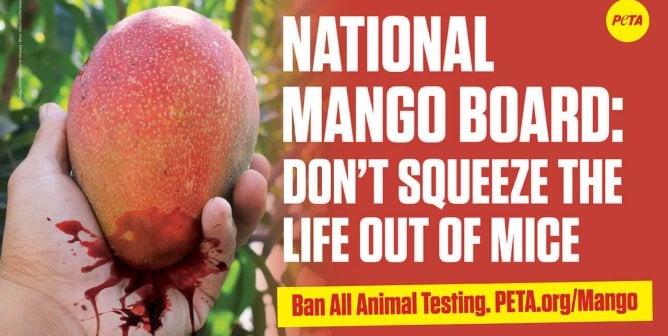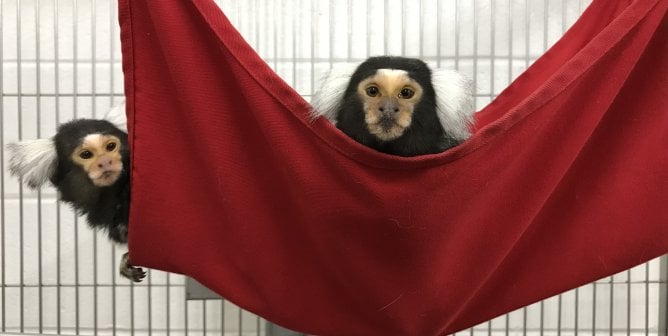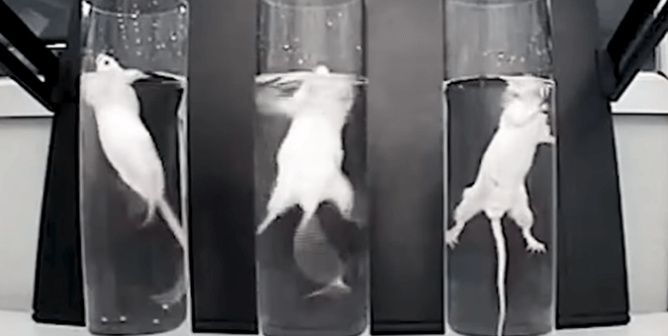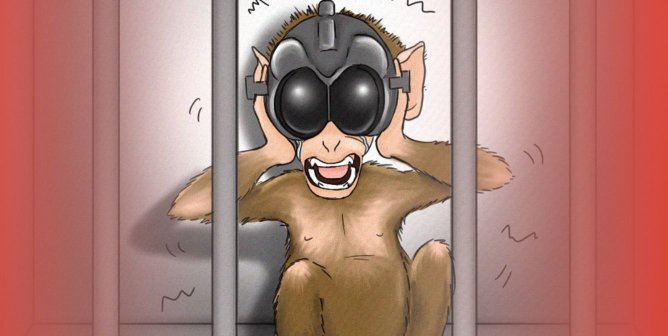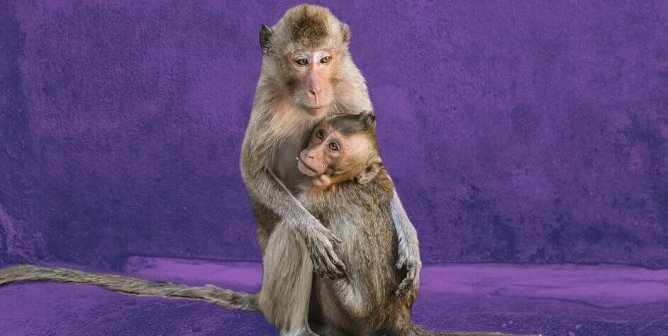Death Toll From Pesticide Testing
Every year, thousands of animals are used in unreliable pesticide tests. PETA scientists are working to replace the use of animals with more reliable and relevant non-animal tests – sparing animals and protecting humans and the environment from pesticides more effectively.
The table below estimates the number of animals commonly used in toxicity tests required by the US Environmental Protection Agency (EPA) and similar regulatory agencies around the world. These numbers represent the animals used in tests to bring just one pesticide active ingredient to market. Even more animals are used to test the many final pesticide products that contain active ingredients.
| Tests | Number of Animals Used |
| Acute oral toxicity (rats) | 4–6 |
| Acute dermal toxicity (rats, rabbits, or guinea pigs)1 | 20 |
| Acute inhalation toxicity (rats) | 20 |
| Eye irritation (rabbits)2 | 1–3 |
| Skin irritation (rabbits) | 1–3 |
| Skin allergy (mice and/or guinea pigs)3 | 15–30 |
| 28-day dermal study (rats, rabbits, or guinea pigs) | 80–100 |
| 90-day oral study (rats) | 80–100 |
| 90-day inhalation study (rats) | 80–100 |
| 90-day oral study (dogs) | 32–40 |
| Genetic toxicity, micronucleus (rats or mice) | 50 |
| Genetic toxicity, chromosomal aberration (rats, mice, or hamsters) | 50 |
| Combined lifetime feeding study and cancer effects (rats) | 480 |
| Cancer effects (mice) | 400 |
| Acute nervous system toxicity (rats) | 80 |
| 90-day nervous system toxicity (rats) | 80 |
| Prenatal developmental toxicity (rats) | 804 |
| Prenatal developmental toxicity (rabbits) | 80 |
| Reproductive toxicity in two generations (rats) | 1,780 |
| Immune system toxicity (rats and/or mice) | 32 |
| General metabolism (rats) | 4 |
| Oral toxicity (birds) | 120 |
| Dietary toxicity (birds)5 | 120 |
| Reproductive toxicity (birds) | 2,256 |
| Acute toxicity (freshwater fish) | 98–140 |
| Acute toxicity (freshwater invertebrates – daphnids) | 140 |
| Acute toxicity (oysters) | 120–140 |
| Acute toxicity (opossum shrimp) | 120 |
| Acute toxicity (penaeid shrimp) | 120–140 |
| Full life-cycle toxicity (freshwater invertebrates – daphnids) | 60–120 |
| Early life-stage toxicity (freshwater fish) | 360–420 |
| Acute toxicity (honeybees) | 175 |
| Total Estimated Number of Animals Used per Pesticide | 7,140–7,430 |
The EPA and other regulatory agencies encourage and accept the use of non-animal tests in place of certain animal tests – in some cases, as a result of scientific analyses conducted in collaboration with PETA scientists.
1The US EPA and other agencies have shown that this animal test is not useful. As companies stop conducting it, approximately 750 rats, rabbits, or guinea pigs will be spared per year: https://www.peta.org/blog/victory-epa-reducing-pesticide-tests-on-animals/.
2The US EPA and other agencies may allow the use of non-animal tests that replace the use of animals: https://www.peta.org/blog/peta-scientist-paper-suggests-new-testing-methods-save-rabbits/.
3The US EPA and other agencies may allow use of non-animal tests that replace the use of animals: https://www.peta.org/blog/a-big-win-for-animals-in-laboratories/.
4In addition to the 80 mothers, more than 1,000 fetuses may be killed in each test.
5The US EPA and other agencies have shown that this animal test is not useful. As companies stop conducting it, hundreds of mallards and quail will be spared each year: https://www.peta.org/blog/peta-science-consortium-epa-research-saves-birds-from-pesticide-tests/.
